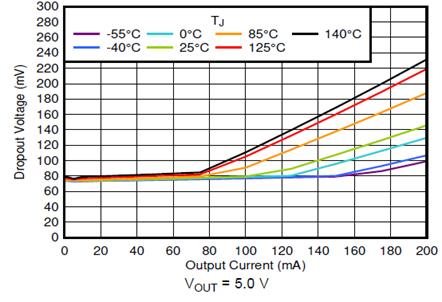Hi,
I have some question for calculate accuracy of regulation voltage on TPS7A03, please see my method for calculation below,
*1. I try to calculate voltage regulation in worse case of LDO. By my condition is,
1) TPS7A0333
2) VIN: 3.6V
3) VOUT: 3.3V
4) Maximum Current: 20mA
5) Temperature Operation: -40 to 70˚C
Method:
VOUT (worse case) = 3.3V + (Nominal acc (-1%) of 3.3V + Acc over temp (-1.5%) of 3.3V + Line Regulation (-2.5mV) + Load Regulation (-3mV) )
VOUT (worse case) = 3.3V + (-2.5%(3.3) + (-5.5mV)) = 3.3V + (-0.0825V-0.0055V) = 3.3V - 0.088V
VOUT (worse case) = 3.212V
So, for above method calculation of output voltage worse case, this is OK? Or have suitable calculation method? please suggest us.
Note: Line Regulation choose from graph Line Reg vs VIN and temp.
From your data sheet not have VOUT 3.3V I max 20mA so select VOUT 1.8V and IOUT 1mA.
Have you graph or spec VOUT 3.3 and maximum current 20mA?
Load regulation choose from graph Load Reg vs VIN and temp
From your data sheet not have VOUT 3.3V so I select VOUT 1.8V
Have you graph or spec VOUT 3.3?
*2.
I notice dropout voltage in your spec from data sheet, I would like to confirm for my understanding it matches to your data sheet, please see example below,
Refer for condition from above but change
A) VIN = 3.6V, V dropout will get around 0.075V. So, this it mean LDO will regulation from voltage input 3.525V
B) VIM = 3.3V, V dropout will get around 0.075V. So, this it mean LDO will regulation from voltage input 3.225V, that is effect with VOUT worse case
Refer from calculation method above,
VOUT (worse case) = 3.225 - 0.088V= 3.137V, this voltage is regulation from VIN 3.3V.
For example above this it, right?
Please let us know
Thanks and best regards,
M.HATTORI.





